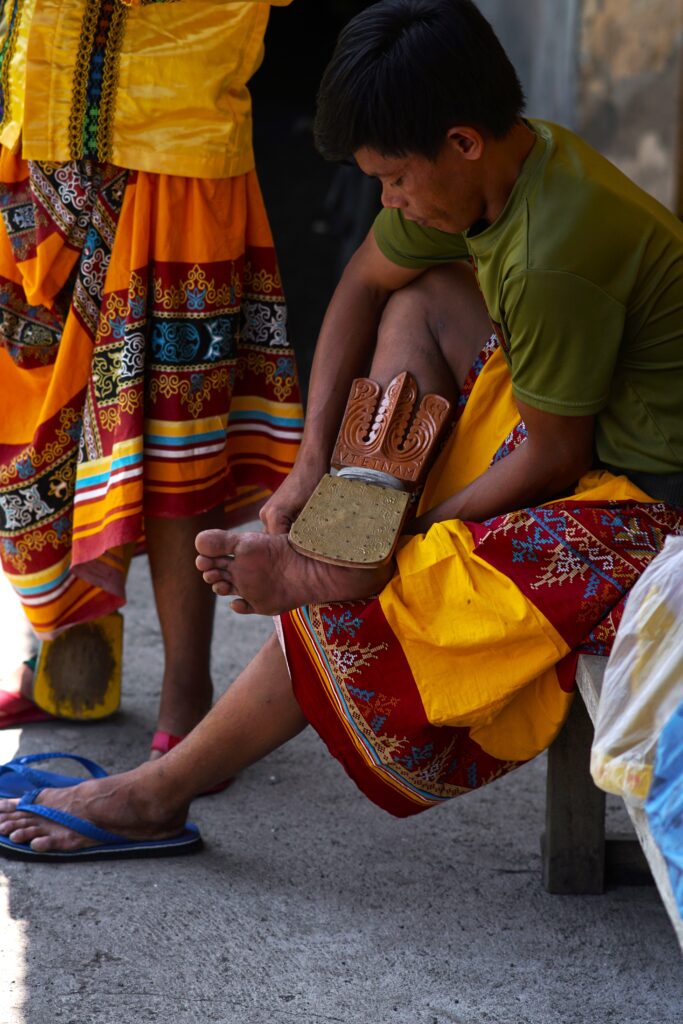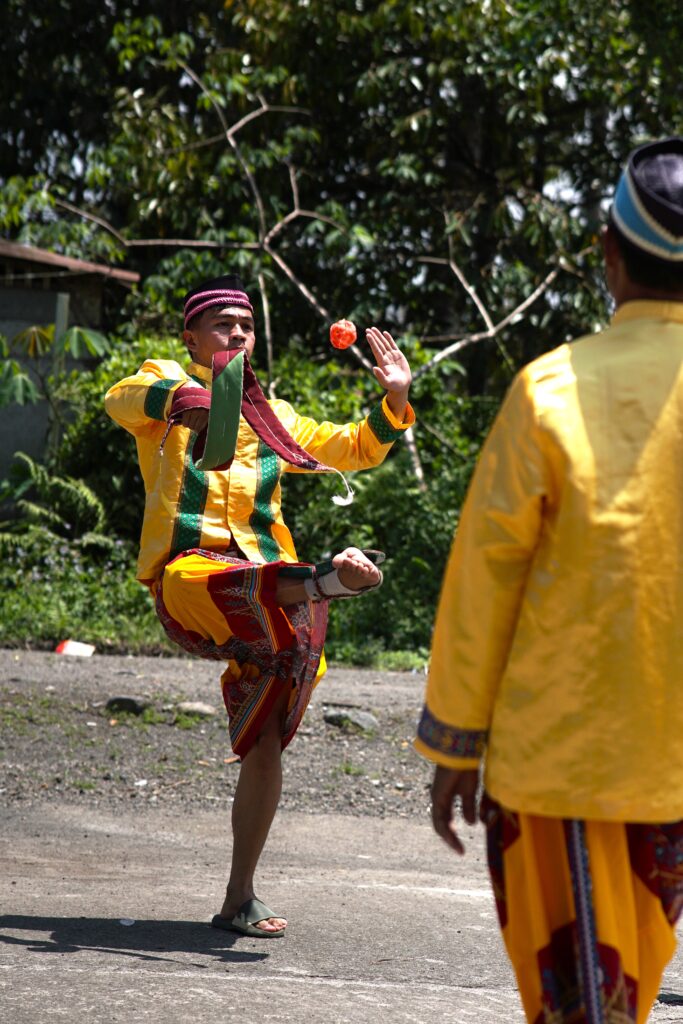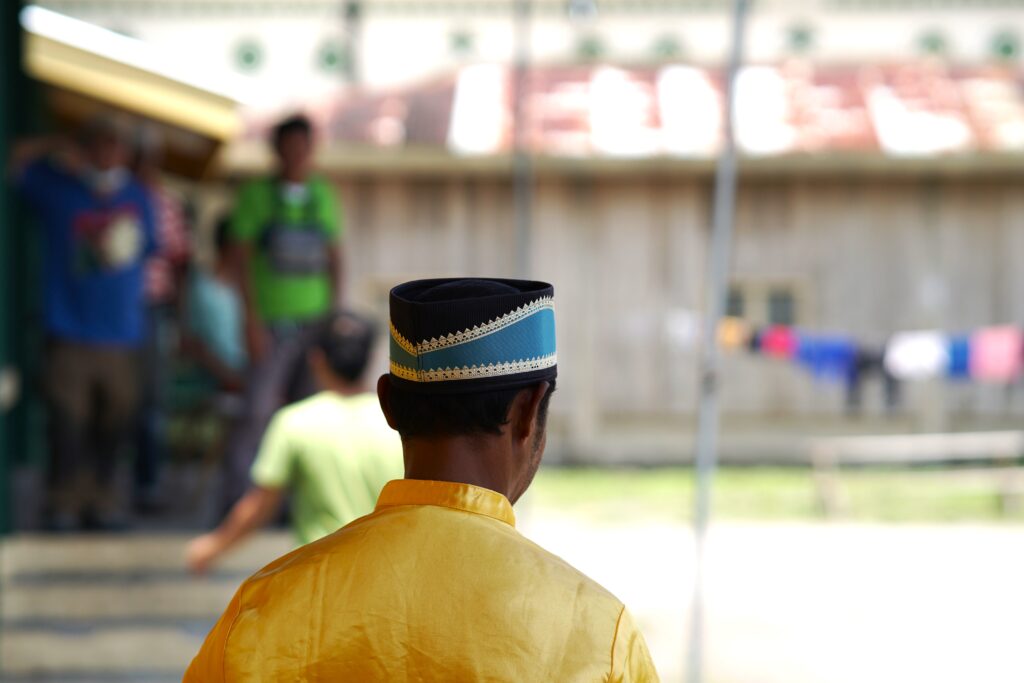Story by Meiyoshi Masgon
One quiet morning, as we explored the idyllic countryside of Butig, a distant sound caught our attention. It echoed like the rhythmic pounding of a colossal belt, immediately igniting our curiosity. Our gracious host guided us to a location near a grand mosque, where a group of spirited and highly acclaimed players, a seasoned team that routinely represented the town in competitions, was deeply engrossed in a game. At first glance, it seemed like a child’s pastime, but as we delved deeper, we discovered it was far more profound – it was culture in action. It’s called ‘Sipa sa Lama’, so we were told. And little did we know that Konsehal Abusalam, our host, is himself a member of this team.

Sipa sa Lama is an integral part of Maranao culture, coming to life during significant occasions such as weddings, kanduli (offerings), or the proclamation of sultans. For the Maranao people, this game embodies concepts like fame, power, honor, and pride, making it an essential component of their social and cultural fabric.
The name “Sipa sa Lama” is quite descriptive, as “Sipa” translates to “kick” and “Lama” refers to “playground.”
A notable aspect of Sipa sa Lama is its exclusivity to male participants. Usually played in teams of 4 to 6 men, each member brings their distinctive skills to the circle, resulting in a captivating and mesmerizing performance. The game’s equipment is equally intriguing and adds to the overall fascination of the sport.
At the heart of Sipa sa Lama lies the “dalapi,” a protective wooden piece worn on the striking foot. It is intricately adorned with okir carvings, infusing an artistic essence into the game. Players also wield a “khandat” or sash, which they whip with each hit of the rattan ball. The objective? To keep the ball in the air for as long as possible.

In this captivating game, the team that manages to keep the sipa in the air for the longest duration emerges victorious. The more sipa they execute, the greater their chances of success. This turns Sipa sa Lama into a mesmerizing dance of skill, coordination, and teamwork.

A striking feature of this game is the formal Maranao costume worn by the players. Much like the vibrant patterns of their traditional attire, the team players wear “chugi” as headgear. Their upper costumes are equally colorful, matched with the “landap malong” as their lower garment, creating a visually spectacular ensemble.

Sipa sa Lama isn’t the only game that showcases the Maranao’s sporting spirit. “Sipa sa Manggis” is another spirited game that takes center stage during celebrations. The aim is to kick a small rattan-made ball upward, aiming to strike the hanging “manggis,” suspended around 10 meters above the ground. These manggis creations consist of small, vividly colored boxes known as kaboka and are often lovingly prepared by families as tokens of gratitude to their hardworking laborers. Inside these kaboka boxes lie various monetary rewards, adding an element of surprise and delight to the game. Unlike Sipa sa Lama, this game is typically played individually, and the term “Manggis” itself carries the sweet promise of victory.
For the Maranao, these traditional games hold profound significance beyond mere entertainment. They believe that games like Sipa sa Lama and Sipa sa Manggis contribute to their fitness and well-being, enhance their lifespan, and foster camaraderie and sportsmanship, thus increasing the number of friends they have.
In the spirit of preserving the rich heritage of the Bangsamoro, the Bangsamoro Sports Commission took a remarkable step last year. They organized a 3-day competition that saw players from Lanao Del Sur, Maguindanao del Sur, Maguindanao del Norte, and the Special Geographic Area returning to the roots of traditional games. Paying tribute to Indigenous Peoples’ Month, the event placed a bright spotlight on these two ancient sports. Who emerged as the highly favored champions of the event? None other than the team from Butig. They not only clinched first place but also stood out as the best-dressed players, adding a touch of style to their remarkable victory.

When you’re immersed in the vibrant culture of the Maranao, prepare to be captivated by Sipa sa Lama, or Manggis for that matter. Delve into its rich traditions, where every kick tells a story and every leap reverberates with their heritage.